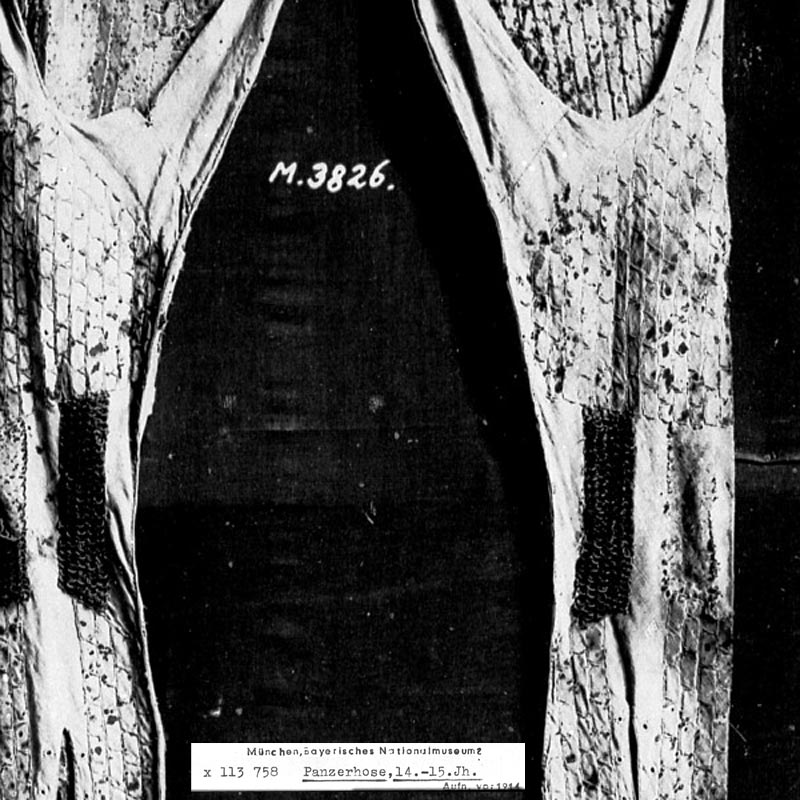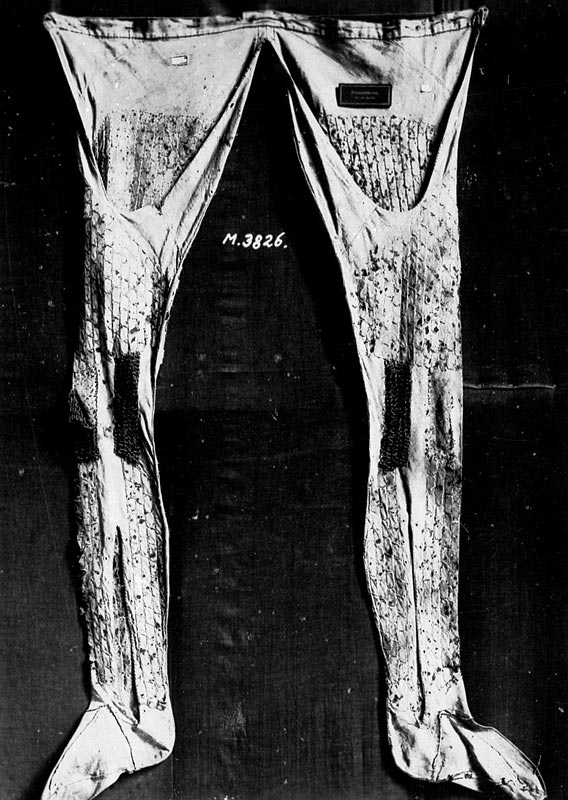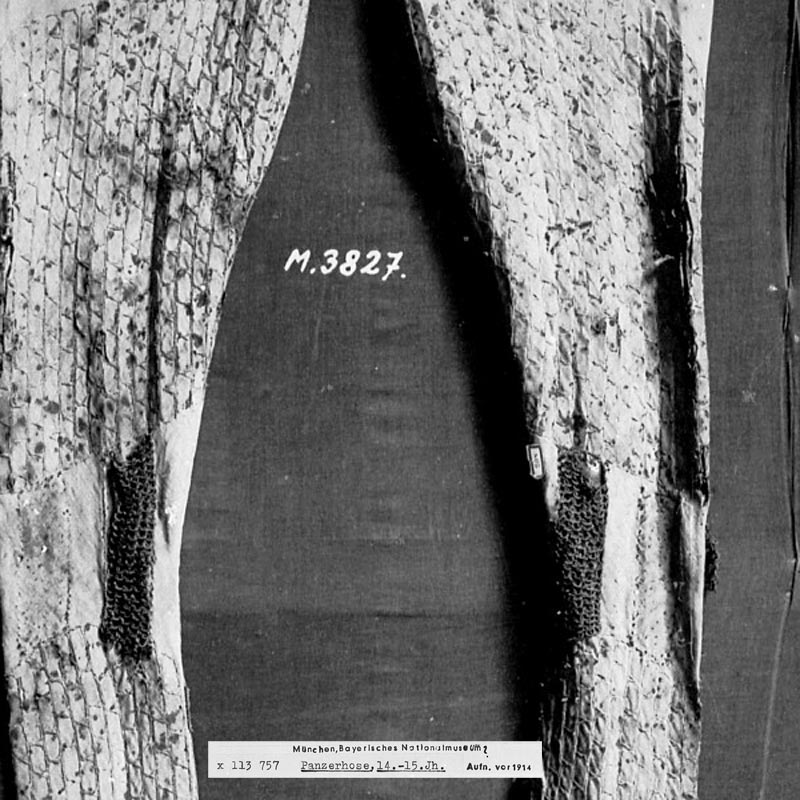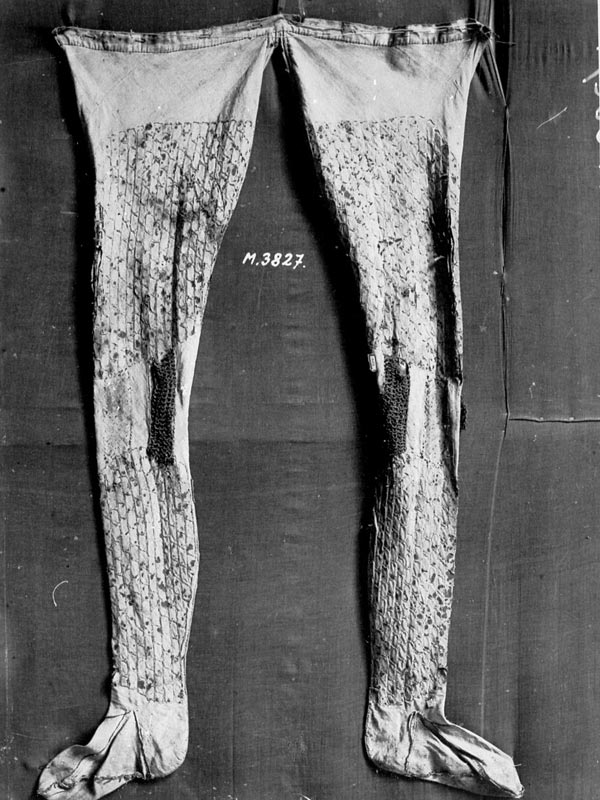I assume they're mail leggings. Are they quilted?
Attached are two 14-15th century examples found at the Bayerisches Nationalmuseum, München.
Are they simply cloth/quilted hosen with mail gussets? Is there mail covering other areas other than just the backs of the knees?

Panzerhosen found at the Bayerisches Nationalmuseum, München

Panzerhosen found at the Bayerisches Nationalmuseum, München

Panzerhosen found at the Bayerisches Nationalmuseum, München

Panzerhosen found at the Bayerisches Nationalmuseum, München